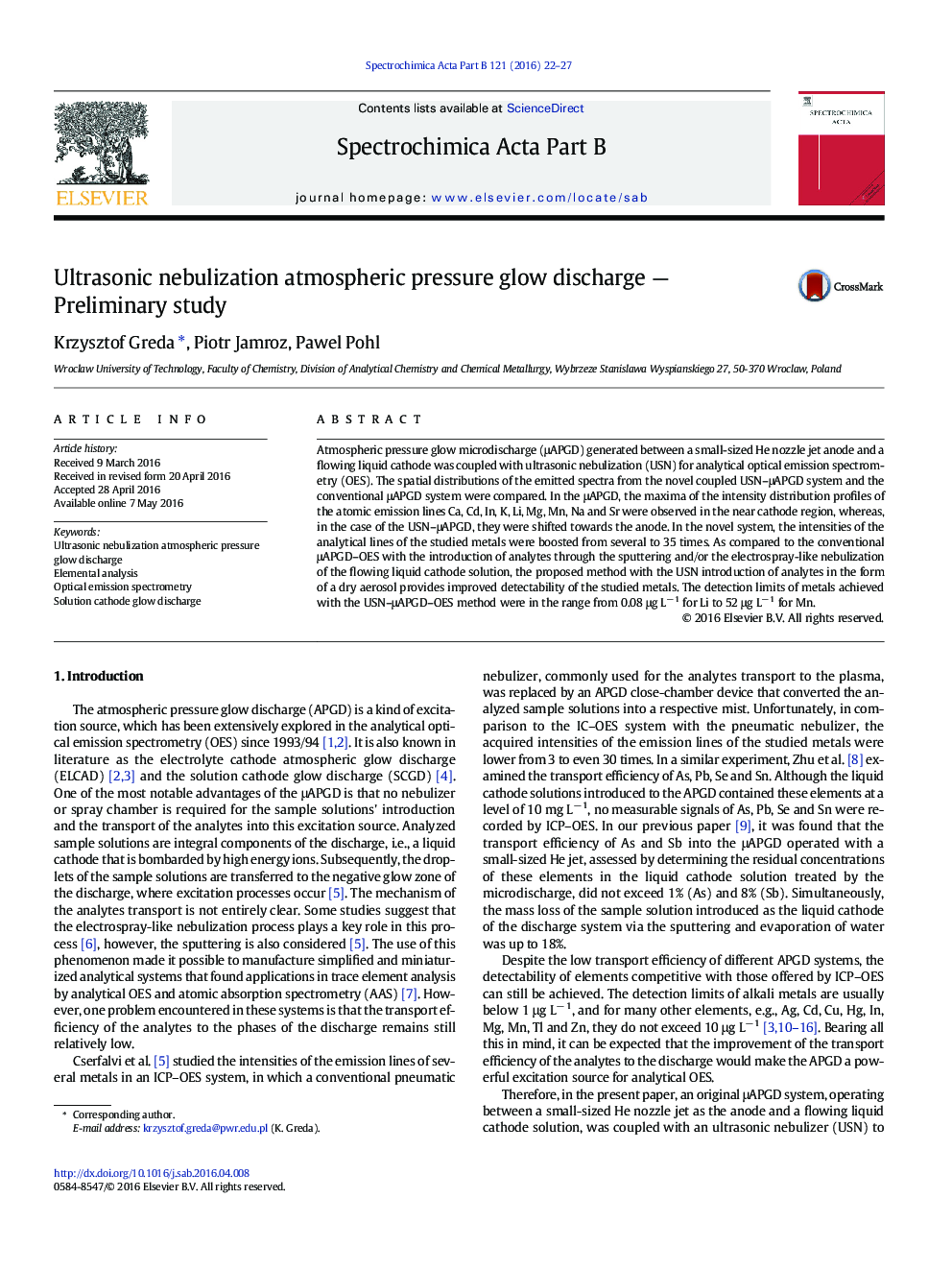| Article ID | Journal | Published Year | Pages | File Type |
|---|---|---|---|---|
| 1239610 | Spectrochimica Acta Part B: Atomic Spectroscopy | 2016 | 6 Pages |
•μAPGD–OES was coupled with ultrasonic nebulization.•The spatial distribution of the intensities of the atomic emission lines was studied.•Sensitivity of atomic emission lines was increased.•LODs of Ca and Sr were improved by one order of magnitude.
Atmospheric pressure glow microdischarge (μAPGD) generated between a small-sized He nozzle jet anode and a flowing liquid cathode was coupled with ultrasonic nebulization (USN) for analytical optical emission spectrometry (OES). The spatial distributions of the emitted spectra from the novel coupled USN–μAPGD system and the conventional μAPGD system were compared. In the μAPGD, the maxima of the intensity distribution profiles of the atomic emission lines Ca, Cd, In, K, Li, Mg, Mn, Na and Sr were observed in the near cathode region, whereas, in the case of the USN–μAPGD, they were shifted towards the anode. In the novel system, the intensities of the analytical lines of the studied metals were boosted from several to 35 times. As compared to the conventional μAPGD–OES with the introduction of analytes through the sputtering and/or the electrospray-like nebulization of the flowing liquid cathode solution, the proposed method with the USN introduction of analytes in the form of a dry aerosol provides improved detectability of the studied metals. The detection limits of metals achieved with the USN–μAPGD–OES method were in the range from 0.08 μg L− 1 for Li to 52 μg L− 1 for Mn.
